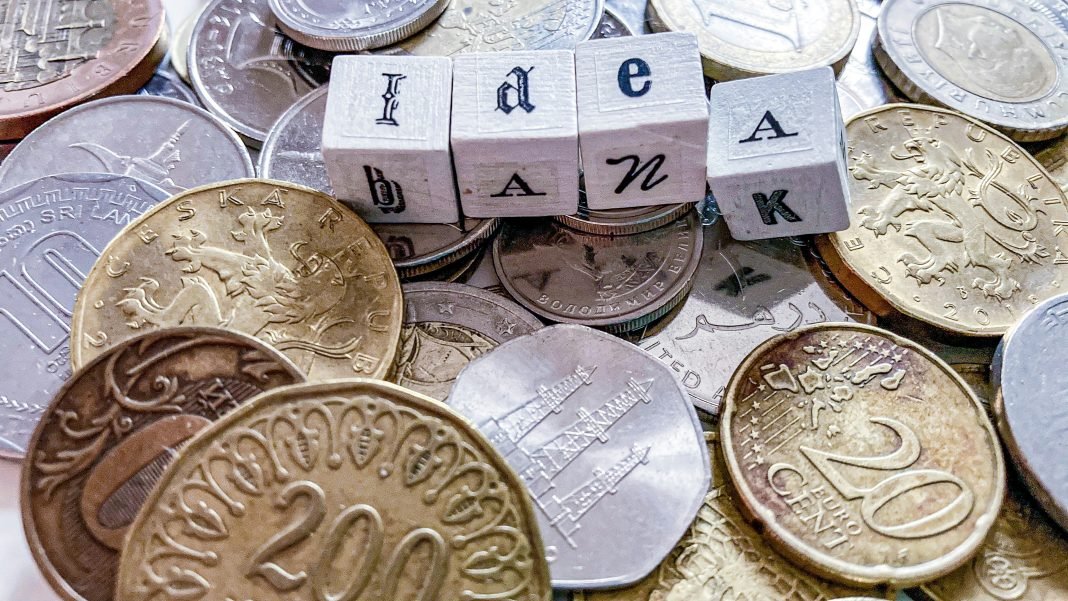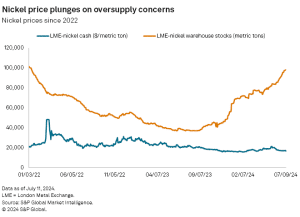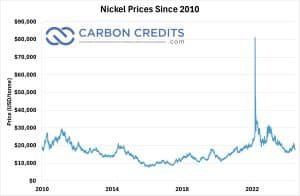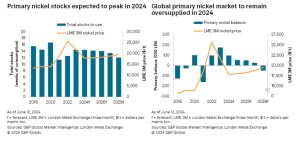In recent developments within the global nickel market, the trajectory of prices has undergone a significant downturn. Consequently, nickel prices have plummeted from the highs recorded in recent years, primarily driven by a global oversupply.
This has led BHP Group to suspend its operations in Western Australia, reflecting the economic challenges within the industry.
BHP’s Bold Move
BHP Group Ltd., one of the largest mining companies, announced the suspension of its Nickel West operations and West Musgrave nickel project in Western Australia. This decision was attributed to the inability to overcome economic challenges posed by the global oversupply of nickel.
From October, BHP will halt mining and processing operations at several key sites, including the Kwinana refinery, Kalgoorlie smelter, and Mt. Keith and Leinster mines. The development of West Musgrave will also be suspended as the company begins its care and maintenance program.
Geraldine Slattery, BHP’s Australia president, cited substantial economic challenges driven by the oversupply of nickel as the reason for the suspension. BHP has flagged an underlying EBITDA loss of approximately $300 million for its Australian nickel operations for the financial year ending June 30, 2024.
Despite the suspension, BHP plans to continue supporting its workforce and local communities during the transition. The company will invest about $300 million annually in its Western Australian nickel facilities, enabling a potential restart of operations. BHP will review its decision to halt operations by February 2027.
- INTERESTING NEWS: Carbon Emissions Averted? BHP and Anglo-American Deal Off the Table
Australia’s resources minister, Madeleine King, expressed disappointment over BHP’s decision, highlighting its substantial impact on the workers and communities of Kwinana, Kambalda, and Kalgoorlie. Western Australian Premier Roger Cook echoed these sentiments, noting that the move would affect thousands of workers. Cook emphasized the importance of diversifying the economy to build resilience in the resources sector.
The Rapid Growth Shaking Up the Nickel Market
The rapid expansion of Indonesia’s nickel industry has led to a market oversupply, resulting in significant price declines from the highs of 2022 and 2023. As of July 10, the London Metal Exchange (LME) cash price for nickel was $16,606.41 per metric ton, a 46.4% drop from the 2023 high of $30,958/t on January 3, according to S&P Global Market Intelligence data.
In 2022, nickel prices peaked at $48,241/t on March 10 due to a historic short squeeze and remained volatile, often exceeding $30,000/t. The current price is down 65.6% from the 2022 high.
The primary nickel surplus limits the potential for price increases, with LME stocks reaching a two-year high on May 29 as supply growth, particularly from Indonesia and China, continues to outpace demand, according to S&P Global Commodity Insights analyst Anna Duquiatan. While nickel prices rose earlier this year due to protests in New Caledonia and US and UK sanctions on Russian metal, they have since decreased but remain higher than at the start of the year.
Seizing Opportunity in a Challenging Market
While expected, BHP’s decision to suspend operations at its nickel assets in Western Australia is a significant blow to the local mining industry. This suspension will result in 1,600 employees being either redeployed or offered redundancies. Although nickel exploration and development will continue, Australia’s nickel mining industry is effectively coming to a halt.
While the market remains in oversupply, some industry players see opportunities amid the challenges.
The adversity presents an opportunity for Lunnon Metals, which is eyeing the mothballed Kambalda nickel concentrator.
With BHP’s suspension of Nickel West operations and the West Musgrave project amid the global nickel downturn, Lunnon is now exploring other processing options for its Baker and Foster nickel deposits. The company is considering a larger role in the district.
Lunnon sees potential in capitalizing on the mothballed Kambalda nickel concentrator by “either purchasing, leasing or otherwise making use of” the plant and its associated infrastructure and utilities. Additionally, the company envisions the possibility of jointly or solely building a new concentrator in the future to “meet the needs of various local stakeholders in Kambalda or further afield.”
Despite the challenging sentiment surrounding nickel, Lunnon Metals remains optimistic about the future of the commodity in Australia and is charting a path forward. Market analysts also share the same sentiment.




